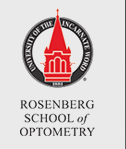Medical Subject Headings
Antiviral Agents; Immunosuppression Therapy; Cicatrix; Viral Load
Abstract
Background: Herpes simplex virus (HSV) is a double stranded DNA virus that infects much of the world’s population. The World Health Organization estimates 67% of people under the age of 50 have HSV-1 and 11% of people under the age of 50 have HSV-2. While most systemic infections remain inactive and do not cause symptoms, the activation and appearance of ocular HSV can be a destructive and vision-threatening issue. HSV keratitis can be epithelial, stromal or a combination. Patients who have recently undergone photorefractive keratectomy (PRK) have a higher risk of HSV keratitis. Because of this, HSV keratitis should be considered in any PRK post-op patient that presents with unusual signs and symptoms such as decreased vision, increased IOPs, ocular pain, photophobia, iritis and corneal haze. When diagnosed in a timely manner, the prognosis is generally favorable. Current treatments for HSV keratitis include antiviral coverage as well as immunosuppression with topical steroids. Case Report: This case involves a patient that developed HSV keratitis while on topical steroid therapy following PRK. The weeks following the initial presentation were spent battling corneal haze, iritis, pain, increased IOPs and decreased visual acuity. After close monitoring and treatment changes based on each clinical presentation, the patient recovered with good vision and minimal corneal scarring. The findings and recommended treatment options are discussed. Conclusion: HSV affects much of the world’s population. Reactivation of the latent virus can lead to vision threatening corneal disease. HSV is capable of causing inflammation and pathology throughout most of the anterior segment of the eye, and therefore should be considered when managing any new or recalcitrant anterior pathology. Although the diagnosis is usually clinical, laboratory testing can be used to confirm a diagnosis. Treatment aims to decrease the viral load and to limit stromal scarring.
Recommended Citation
Graf J. Herpes Simplex Keratitis after PRK. Optometric Clinical Practice. 2024; 6(1):35. doi:https://doi.org/10.37685.uiwlibraries.2575-7717.5.2.1022. https://doi.org/https://doi.org/10.37685.uiwlibraries.2575-7717.5.2.1022
Creative Commons License

This work is licensed under a Creative Commons Attribution 4.0 International License.
Digital Object Identifier (DOI)
https://doi.org/10.37685.uiwlibraries.2575-7717.5.2.1022
Included in
Adult and Continuing Education and Teaching Commons, Health and Physical Education Commons, Infectious Disease Commons, Optometry Commons, Other Education Commons, Other Medicine and Health Sciences Commons, Other Teacher Education and Professional Development Commons

